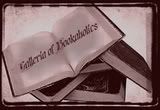The methods used to extract fragrant oils today are based on the ancient principles of maceration, expression and stream distillation. An "absolute" is an extract obtained by extraction with volatile solvents or by enfleurage. It is considered the purest perfume material, retaining most of the plant's aromatic constituents. Many modern techniques stem from those of ancient cultures.
Enfleurage et maceration
This technique is very costly, and is rarely used today. It reached its peak in 1860 and made the reputation of Grasse. It is a labor-intensive process that yields the highest quality of absolutes because it does not involve heat. Heat always alters the fragrance. It is used on delicate flowers that can not stand up to the high heat, and that continue to release essential oils after they have been picked. Examples of these flowers are Jasmine, Violet, Tuberose and Rose.
Enfleurage goes back thousands of years to the ancient Egyptians. It works on the principle that fats absorb smells. Petals or other fragrant parts of a plant are steeped in fat or non-evaporating oil which will absorb their fragrance. A mixture of pork, lard and beef suet are smeared on to a glass plate in a wooden frame called a chassis. The flowers are placed on the fat and left to release their oils for several days. This process was repeated several times with fresh flower heads until the fat was totally absorbed with essential oil, the resultant substance being known as 'pomade'; the oil was then retrieved from the fat by dissolving in an alcoholic solvent. This is mechanically mixed with alcohol for up to one week, and is chilled to -68 degrees F. The essential oils dissolve in the alcohol and the fat does not. The mixture is chilled and filtered several times to remove all the fat. The alcohol is then evaporated to leave the pure absolute. Sometimes enfleurage is now carried out with cloth soaked in olive oil or liquid paraffin, which is laid over the frames instead of fat, the resultant perfumed oil being then known as 'huile antique'.
Maceration is similar to enfleurage. Maceration is used to extract essential oils from animal ingredients, vanilla and iris. These materials are steeped into vats of oil until the scented parts dissolve. The oil may be heated to speed up the process. Maceration takes long periods of time (sometimes years).
Expression
Expression is a simple technique where the rinds of citrus fruits are cold pressed to extract their essential oils using rollers or sponges. There is no heat involved, leaving the oil to smell very close to the original plant. The ancient Egyptians gathered flowers in a cloth bag which was twisted until the oil dripped out. In Italy, lemon oil is also occasionally expressed by a process called ecuelle.
Distillation
Distillation is the main method used for extracting essential oils. Distillation is based on the principal that when plant material is placed in boiling water, the essential oil in it will evaporate with the steam. Once the steam and oil have been condensed, the oil will separate from the water, and it can be collected. Plants are crushed to encourage them to release their oils. Plants are boiled in water, and the essential oils vaporize and rise up with the steam. The vapors are captured, and allowed to condense back into liquids. The essential oils are poured into Florentine flasks. Five to six tons of roses are needed to obtain one kilo of essential oil. Current methods also involve placing the plants on a screen and steam is passed through them.
Extraction with volatiles solvents
This method is used for delicate flowers whose odors are damaged by the high heat needed to boil water. The oils are extracted using solvents which have lower boiling points than water. Various substances such as ether or high-grade petroleum, which evaporate rapidly, are used in modern perfumery to dissolve essential oils from fragrant plant and animal materials. The usual method involves placing the fragrant material on perforated metal plates in a container (the extractor); the solvent is passed over them and led into a still, where it evaporates, leaving a semi-solid mass known as concrete, which contains the essential oil together with stearoptene. The oil can then be separated from the stearoptene by extraction with alcohol in a 'batteuse', producing the substance called absolute, which is the purest and most concentrated form of essential oil known.A part from these techniques there are various other operations such as rectification, fractional distillation, terpenes removal, decolourisation, etc., which improve and refine the numerous raw materials used for the blending and making of perfumes.
Wednesday, April 15
Subscribe to:
Post Comments (Atom)

























mcm2 prfume ader..gud bsness!!
ReplyDeleteDo you know if all of the same tips apply to homemade perfumes made from essential oils? They are my faves. :)
ReplyDeletehuman pheromones